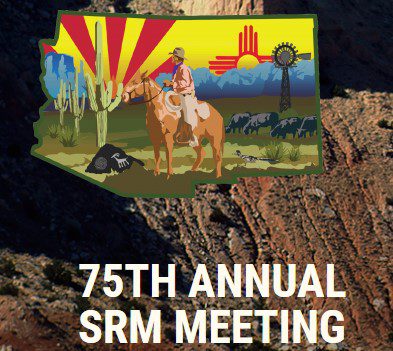Events

Rangeland economics 101
View recorded sessions. NV Section of the Society for Rangeland Management is hosting an all-day webinar.

Residents’ perspectives on Colorado’s 2020 Cameron Peak Fire
Webinar recording. The 2020 Cameron Peak Fire burned more than 200,000 acres of public and private land in northern Colorado making it the largest fire recorded in Colorado’s history. Extreme…

Postfire landscape management in frequent-fire conifer forests of the southwestern US
Webinar recording. The increasing incidence of large wildfires with extensive stand-replacing effects across the southwestern United States is altering the contemporary forest management template within historically frequent-fire conifer forests. While…

Developing divergent, plausible, and relevant climate futures for near- and long-term resource planning
Webinar recording. It seems the effects of climate change were all too clear in 2021. Yet, we know more change is expected. When trying to adapt to a changing climate,…

Exploring innovation in a public land grazing system (7:17)
View short video. In small communities like Plush, Oregon, where “The Need for Flexibility: Exploring Innovation in a Public Land Grazing System” was filmed, agriculture is a major economic contributor. Benefits extend far beyond the actual animal unit months provided to the producer. The creation of local jobs, community investments, and the stability provided by…

CA-NV Winter Status Update Webinar (Jan 2022)
Webinar recording. According to the January 18 U.S. Drought Monitor, 99.6% of CA/NV is in drought, with 9.8% in Extreme (D3) or Exceptional (D4) Drought. The area in D3/D4 is down from 69.9% just one month ago, reflecting the barrage of storms that have brought rain and snow to the region since mid-fall. These storms…

Bipartisan Infrastructure Bill: What does it mean for forest collaboratives?
Webinar recording. This webinar will include presentations and interactive breakout sessions to explore implications and opportunities for forest collaboratives: Larry Chambers, Change Management and Communication Lead, U.S. Forest Service Jake Donnay, Director, Legislative Affairs, U.S. Forest Service Steve Moyer, Vice President of Government Affairs, Trout Unlimited Bill Imbergamo, Executive Director, Federal Forest Resource Coalition

2022 Society for Range Management (SRM)’s 75th Annual Meeting
Meeting website. Join us in the heart of New Mexico for the 75th Annual SRM Meeting. The beautiful high desert rangelands, diverse cultures, authentic art, and painted skies of Albuquerque will make for a great meeting.

Invasion, fire, and the future of NW wildlands: Ventenata dubia in the Blue Mtns Ecoregion
Webinar recording. In this deep dive webinar, Dr. Becky Kerns and collaborating scientists will present and synthesize results from a Joint Fire Science funded project aimed at understanding the current and future Ventenata dubia (ventenata) invasion in the Blue Mountains Ecoregion. Wildfires in 2014 and 2015 in the ecoregion reportedly spread in an unusual fashion…

Science and management of wildfire, fish, and water resources in the western US
Webinar recording. Wildfire has increased 20-fold in the last 30 years in the Western U.S., partly due to climate change and partly due to forest and fire management practices. At the same time, many water resources are drying up. And fish populations throughout the western US are struggling due to water diversions, instream barriers, invasive…

